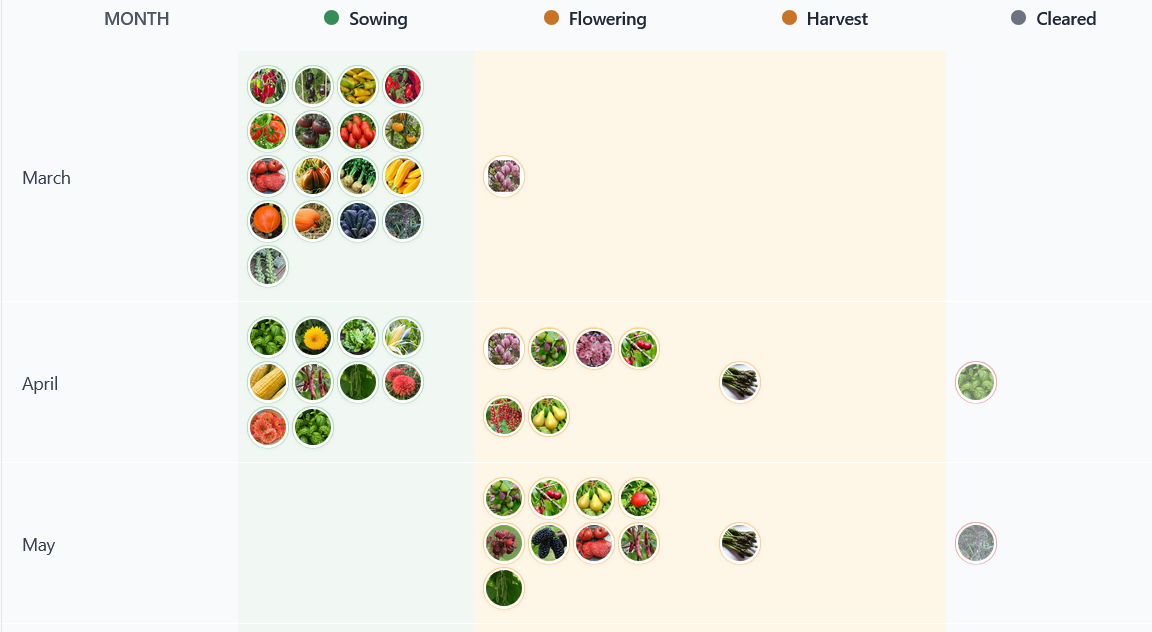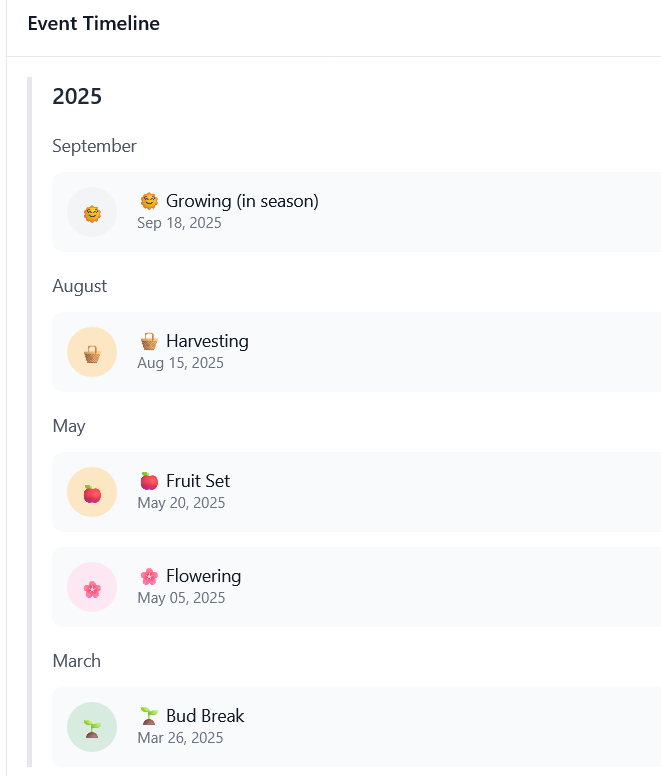The problem: I could never remember what really happened
Every spring I told myself I would keep better notes. I would write dates in a notebook, take photos, or set reminders on my phone. By midsummer everything was scattered. I could not remember when I last fed the tomatoes or when the courgettes started flowering. The notebook stayed in the kitchen, and my phone reminders had no context.
I wanted to look back at a plant and see its story: when it was sown, transplanted, fed, and harvested. There was no place that showed that. My garden had no memory, so every season felt like starting from scratch.
The goal: one place that remembers for you
I did not want another checklist. I wanted something that quietly records what happens so I can check later and see the truth. Every time I sow, transplant, feed, or harvest, the system saves it with a date. I can open a plant and see its full timeline from the day it was first planned.
Over time, that history becomes a record of the garden, not what I meant to do but what actually happened. And when you start tracking everything, you begin to notice things you missed before: which plants always lag, how long flowering really takes, and how weather changes each stage.

Seeing what really happened
Each plant has its own timeline that fills itself as the season unfolds. When I tick something off or add a note, it is saved automatically.

The timeline tells a simple story. For example, I can see that the tomatoes were sown on 10 March, transplanted in early May, fed twice in June, and started flowering in mid July. When I look at last year’s record, I can compare and spot patterns. I can see that this year’s flowering started five days earlier, or that one feeding made more difference than I thought.
It is not about tracking for its own sake. It is about seeing how a season actually played out, so the next one starts with more context.
Tracking plants that stay in the garden
I use the same system for permanent plants too. My apple tree has its own record that spans years. I log when it blossoms, when I spot pests, and when I pick the first fruit.

It feels small, but it turns that tree into part of a longer story. Each year adds another line to the timeline. I can see how flowering and harvest dates shift with the weather, and it helps me understand my own microclimate better than any chart.
What this changes
Having everything recorded in one place changes how I think about my garden. I do not have to remember every date or scroll through photos to find what happened. I can open a plant and see its life laid out in front of me.
With time, that memory turns into knowledge. I start to see patterns, notice timing I used to overlook, and understand how long things truly take. It brings calm to the process because I can see what worked and what did not, instead of trying to remember it from memory.
Closing reflection
I built this because I was tired of starting from zero every year. The garden keeps moving, but memory fades fast. Having a clear record of what happened lets me learn from my own experience instead of guessing. Once you can see what really happened, the next season starts with understanding instead of uncertainty.